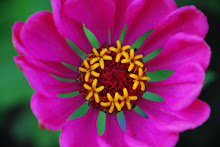Greetings Portland Gardeners,
Happy May Day! The first day of May has traditionally been celebrated as the beginning of the growing season, a time of cleansing from the winter, and purification of livestock. Children gave baskets of flowers to family, neighbors, and friends. All danced around the may pole. This seasonal holiday still has relevance to us in modern times. It is an excellent opportunity to take some time strolling in nature, get off the concrete and onto dirt or grass. Observe the spring unfolding all around us. Bring some fragrant lilacs, tulips, or iris into your home or office. This morning I cut and brought fresh lilacs inside, and now my home smells so delicious. Clean out your pantry and donate to the local food bank. Light a candle and thank Mother Nature for her brightness and bounty.

In my edible garden I am harvesting 2 varieties of kale, beautiful red leaf lettuce, and so many herbs! The snow and sugar snap peas are tall and luscious. They just set their first flowers, pods will soon be on the way in the next couple of weeks. Radish seeds have germinated, but the carrot seeds have been slow to sprout. I keep the seed bed covered with a frost blanket, so that marauding squirrels and cats can't destroy the exposed soil.

Lovage, chives, thyme, parsley, cilantro, rosemary, sage, chervil, marjoram, and sweet bay are all hopping into my culinary creations. Raspberry canes have leafed out and blueberry bushes are covered in flowers.

Last Friday was a lovely sunny 60 degree day and I did lots of gardening. The past few days have been overcast, cool, windy, and wet. The forecast this Wednesday and Thursday is for sunny and 80 degrees! Wow, that is something else. In case you are tempted to plant your tomatoes this week, please understand it is TOO EARLY TO PLANT TOMATOES! Tomatoes need night temperatures consistently above 55 degrees, and we are still averaging night temps in the 40s. Please wait a few more weeks for your tomato plants. Planting them too early only causes plants to be stressed, stunted, or die. You don't get any "jump start" by planting heat loving vegetable when the weather is too cool.
For full information on organic tomato gardening please read this post.
There is still a lot you can plant in the edible garden including most herbs, fruit, and lots of "cool season" vegetables. With warming soil temperatures, May is the perfect time to direct seed your root vegetables. If you want peas get them planted now! Peas wither in the hot heat of summer, so they are ideally planted March-April, and as late as early May.
Here's what to plant now:
Artichokes
Asian Greens
Beets
Broccoli & Broccoli Raab
Brussels Sprouts
Cauliflower
Cabbage
Carrots
Celery
Collards
Florence Fennel
Kale
Kohlrabi
Leeks
Lettuce
Mustard Greens
Parsnips
Peas
Radishes
Rutabaga
Scallions
Salad Greens: arugula, cress, endive, radicchio
Spinach
Swiss Chard
Turnip

These are WARM SEASON crops that need night temperatures consistently above 55 degrees. Typically planted mid May to early June depending on the year.
Please wait and do not plant these crops yet: basil, beans, corn, cucumber, eggplant, gourd, ground cherries, melons, peppers, pumpkins, summer squash, sweet potatoes, tomatoes, tomatillos, winter squash, and zucchini.

Even though it is still too early to plant tomatoes, I mark their space in the garden with tomato cages. That way I don't get too overzealous planting cool season crops and don't save any space for warm season crops with later planting dates. I keep all of my unplanted raised bed soil covered with a frost blanket too keep out the critters. Check out that fall-planted garlic!
Be sure to tuck in several annual flowers in your edible garden. They help attract beneficial bugs. Some of my favorites: alyssum, calendula, cleome, cosmos, marigold, nasturtium, petunia, snapdragons, sunflower, zinnia. May is the ideal month for finding the best selection of annual bedding flowers.

Happy May and Happy Gardening,
Jolie


















